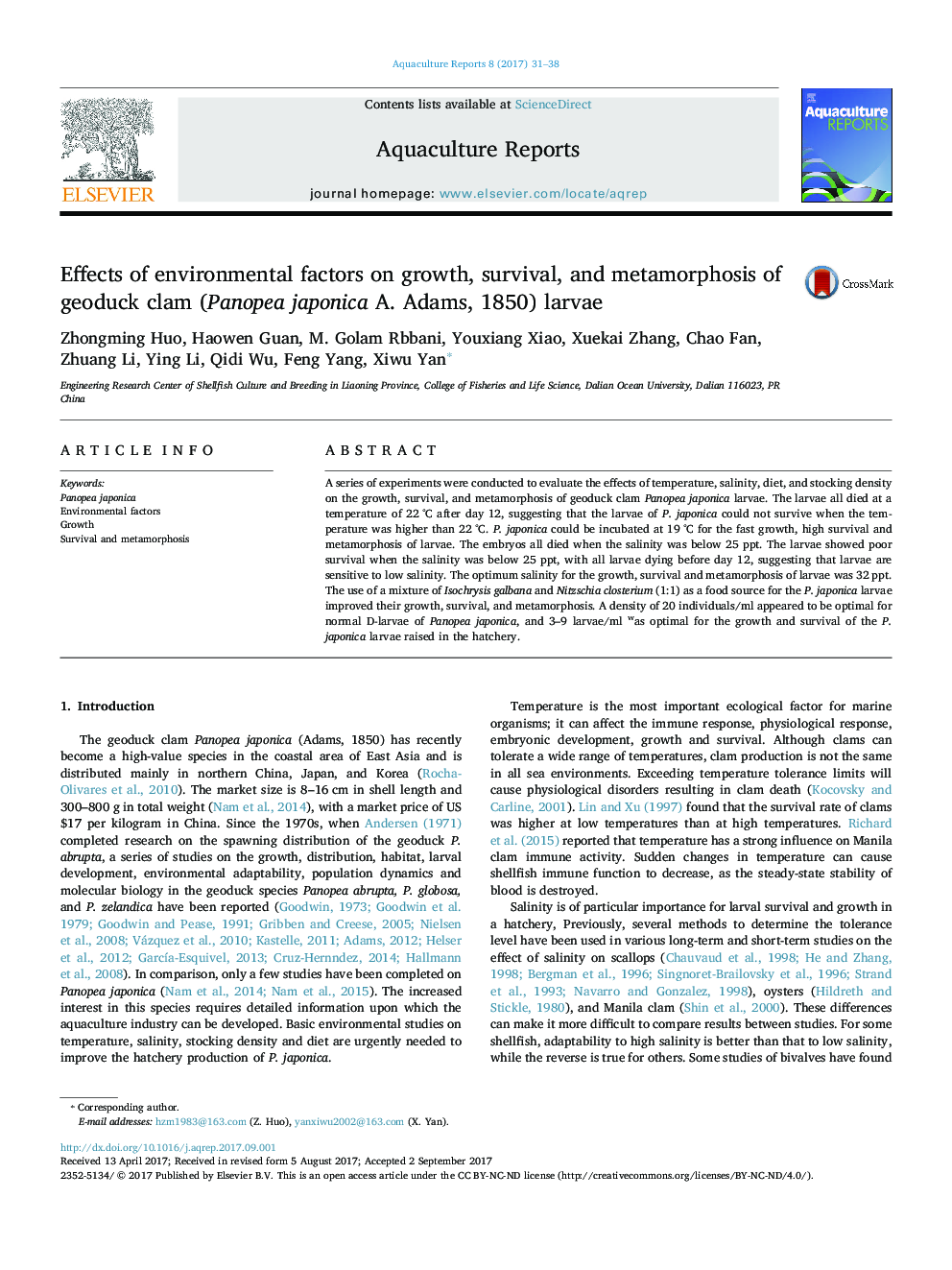| Article ID | Journal | Published Year | Pages | File Type |
|---|---|---|---|---|
| 5752707 | Aquaculture Reports | 2017 | 8 Pages |
Abstract
A series of experiments were conducted to evaluate the effects of temperature, salinity, diet, and stocking density on the growth, survival, and metamorphosis of geoduck clam Panopea japonica larvae. The larvae all died at a temperature of 22 °C after day 12, suggesting that the larvae of P. japonica could not survive when the temperature was higher than 22 °C. P. japonica could be incubated at 19 °C for the fast growth, high survival and metamorphosis of larvae. The embryos all died when the salinity was below 25 ppt. The larvae showed poor survival when the salinity was below 25 ppt, with all larvae dying before day 12, suggesting that larvae are sensitive to low salinity. The optimum salinity for the growth, survival and metamorphosis of larvae was 32 ppt. The use of a mixture of Isochrysis galbana and Nitzschia closterium (1:1) as a food source for the P. japonica larvae improved their growth, survival, and metamorphosis. A density of 20 individuals/ml appeared to be optimal for normal D-larvae of Panopea japonica, and 3-9 larvae/ml was optimal for the growth and survival of the P. japonica larvae raised in the hatchery.
Keywords
Related Topics
Life Sciences
Agricultural and Biological Sciences
Animal Science and Zoology
Authors
Zhongming Huo, Haowen Guan, M. Golam Rbbani, Youxiang Xiao, Xuekai Zhang, Chao Fan, Zhuang Li, Ying Li, Qidi Wu, Feng Yang, Xiwu Yan,
